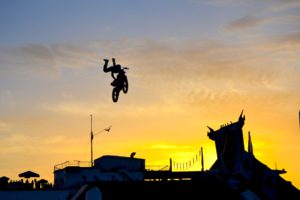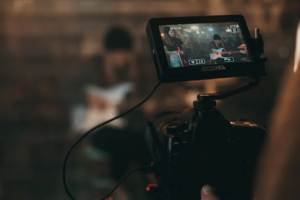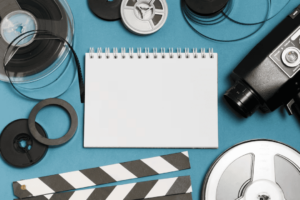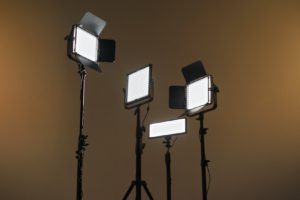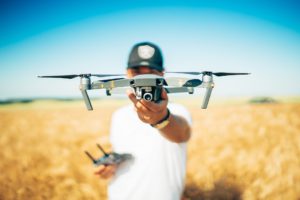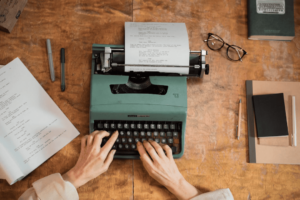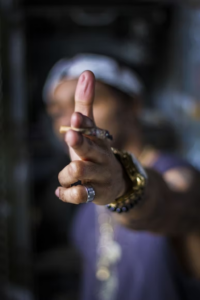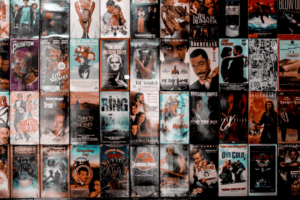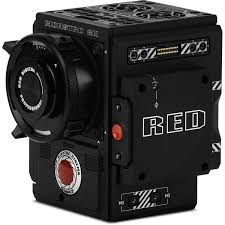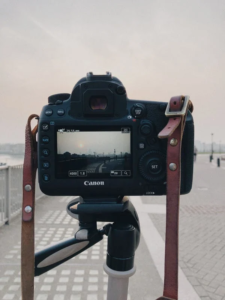A film shot, or camera shot, is a continuous view through a single camera without interruption. By combining different types of film shots, movements, and angles, filmmakers can emphasize different actions and emotions for different scenes.
What Are Film Shots?
Types of Camera Shot Sizes
Camera Shot Size Overview
- Extreme wide shot/extreme long shot: This shot is used to show the subject and the entire area of the environment they are in.
- Wide shot/long shot: It’s used to focus on the subject while still showing the scene the subject is in.
- Medium shot: This shot shows the subject from the knees up, and is often referred to as the 3/4 shot.
- Medium close-up shot: The subject fills the frame with this shot, and it is somewhere between a medium close-up and a close-up.
- Close-up shot: This shot shows emotions and detailed reactions, with the subject filling the entire frame.
- Choker shot: A typical choker shot shows the subject’s face from just above the eyebrows to just below the mouth and is between a close-up and an extreme close-up.
- Extreme close-up shot: This shot shows the detail of an object, such as one a character is handling, or a person, such as just their eyes or moving lips.
- Full shot: A full shot is similar to a wide shot except that it focuses on the character in the frame, showing them from head to toe.
- Cowboy shot: This is similar to the medium shot except that the character is shown from the hips or waist up.
- Establishing shot: This is a long shot at the beginning of a scene that shows objects, buildings, and other elements of a setting from a distance to establish where the next sequence of events takes place.
What Are the Basic Types of Camera Shots?
Camera Shot Size Summary
The distance your subject is to the camera impacts how the audience feels about them. Your subject will appear largest in a close-up or choker shot and smallest in a wide or long shot.
What Is Camera Shot Framing?
Camera shot framing refers to how you place or position subjects in shots. It’s about composing an image rather than just pointing the camera at the subject. Some considerations when you’re framing the shot are the relationships between characters in the shot — if there are more than one — the size of the subject, and the elements on the left and right side of the subject that create balance.
Types of Camera Shot Framing
- Single shot, where the shot only captures one subject.
- Two shot, which has only two characters.
- Three shot, when three characters are in the frame.
- Point-of-view shot (POV), which shows the scene from the point of view of one of the characters, makes the audience feel that they are there seeing what the character is seeing.
- Over-the-shoulder shot (OTS), which shows the subject from behind the shoulder of another character.
- Over-the-hip (OTH) shot, in which the camera is placed on the hip of one character and the focus is on the subject.
- Reverse angle shot, which is approximately 180 degrees opposite the previous shot.
- Reaction shot, which shows the character’s reaction to the previous shot.
- Weather shot, where the subject of the filming is the weather
Shots Indicating Subject Size
- Extreme long shot: Shows the subject from a distance.
- Long shot: Shows the entire person, although they don’t necessarily have to fill the frame.
- Full shot: Here, the subject mostly fills the frame.
- Medium shot: Shows the subject from the knees up.
- Cowboy shot: Shows the subject from the mid-thigh and up.
- Medium shot: Shows a portion of the subject, often from the waist up.
- Medium close-up: A shot that is between a close-up and medium shot, often with the subject framed from the shoulder or chest up.
- Close-up: The subject’s head or face fills the screen.
- Choker: A variation of a close-up where the subject’s face fills the frame from the eyebrows to the mouth.
- Extreme close-up: Emphasizes a small detail on the subject.
What Is a Depth of Field?
Depth of field is used to describe the size of the area where the subject you’re filming is relatively sharp. The point of focus is the object in the frame that the filmmaker most wants to call attention to. The imaginary two-dimensional plane that extends from that point is referred to as the plane of focus. When you’re filming, any part of the image that falls on the plane of focus is officially in focus.
Types of Camera Shot Focus
- Focus pull, where you focus the lens to keep the subject within an acceptable focus range.
- Rack focus, where the focus is more aggressively shifted from subject A to subject B.
- Tilt-shift, where parts of the image are in focus while other parts are out of focus.
- Deep focus, is when both the subject and the environment are in focus.
- Shallow focus, where the subject is crisp and in focus while the background is out of focus.
What Is a Camera Shot Angle?
A camera shot angle refers to where the camera is placed to take a shot. It can be used to express emotion or create a different experience for the audience. A scene can be shot from different angles to create a more dynamic viewing and storytelling experience.
What Are the Different Angle Shots in Film?
Types of Camera Shot Angles
Shots Indicating Camera Angle/Placement
- Eye-level shot: This is when the camera is placed at the same height as the eyes of the characters.
- Low angle shot: This shot frames the subject from a low height, often used to emphasize differences in power between characters.
- Aerial shot/helicopter shot: Taken from way up high, this shot is usually from a drone or helicopter to establish the expanse of the surrounding landscape.
- High angle shot: This is when the subject is framed with the camera looking down at them.
- Birds-eye-view shot/overhead shot: This is a shot taken from way above the subject, usually including a significant amount of the surrounding environment to create a sense of scale or movement.
- Shoulder-level shot: This is where the camera is approximately the same height as the character’s shoulders.
- Hip-level shot: The camera is approximately at the height of the character’s hips.
- Knee-level shot: The camera is approximately at the same level as the character’s knees.
- Ground-level shot: When the height of the camera is at ground level with the character, this shot captures what’s happening on the ground the character is standing on.
- Dutch-angle/tilt shot: This is where the camera is tilted to the side.
- Cut-in shot: This type of shot cuts into the action on the screen to offer a different view of something happening in this main scene.
- Cutaway shot: As a shot that cuts away from the main action on the screen, it’s used to focus on secondary action and add more information for greater understanding for the audience.
- Master shot: A long shot that captures most or all of the action happening in a scene.
- Deep focus: A shot that keeps everything on the screen in sharp focus, including the foreground, background, and middle ground.
- Locked-down shot: With this shot, the camera is fixed in one position and the action continues off-screen.
- Library shot: Pre-existing film of a location that’s pulled from a library.
- Matte shot: A shot that incorporates action in the foreground with a background that is created on a computer.
- Money shot: An expensive shot that is designed to startle or wow the audience.
- Top shot: A shot that looks directly down at a scene. Also known as a birds-eye-view shot.
How to Elevate the Look of Your Film
A Variable ND filter can make your film look professional and cinematic. When you’re on location filming, use a VND filter to control the shutter speed. This is especially important when light conditions are changing outside. The variable filter allows you to rapidly adjust, adapting to different environments.
How to Capture Stunning Aerial Footage
Add an ND filter to your drone when you’re shooting aerial footage, as it can cut through the UV haze when up high, reduce glare, and make your image look crisp and clear.
What Is Camera Movement?
Camera movement is a technique for changing the relationship between the subject and the camera frame, controlling the delivery of the narrative. It helps to give additional meaning to what’s happening on the screen.
Types of Camera Movements
Basic Camera Moves
- Zoom Shot, which involves changing the focal length of the lens to zoom in or out during filming.
- Pan shot, which involves moving the camera from side to side to show something to the audience or help them better follow the sequence of events.
- Tilt shot, similar to a pan shot, except moving the camera up and down.
- Dolly shot, where the camera is attached to a dolly that moves on tracks and can possibly move up and down.
- Truck shot, where you move the entire camera on a fixed point and the motion goes from side to side.
- Pedestal shot, where the entire camera is moved vertically, not just the angle of view, and is often combined with panning and/or tilting.
Storyboarding Shot Types
- Establishing shot
- Full shot
- Medium shot
- Close shot
- Extreme close shot
- Up shot
- Down shot
- Over-the-shoulder shot
- Two shot
- Point of view shot
Other Types of Camera Movement
- Static/fixed shot, where there is no camera movement, and the shot emphasizes the movement of the subject in the environment.
- Arc shot, where the camera moves in an arc pattern around the subject to give the audience a better perspective of their surroundings.
- Crab shot, a less-common version of tracking a subject where the dolly the camera is on goes sideways.
- Dolly zoom shot, where the position of the camera and focal length are changed simultaneously.
- Whip pan shot/swish pan shot, which is used to create a blur as you pan from one shot to the next.
- Tracking shot, where the camera follows the subject, either from behind or at their side, moving with them.
- Whip tilt shot, which is used to create a blur panning from one shot to the next vertically.
- Bridging shot, which denotes a shift in place or time.
- Sequence shot, which covers an entire scene in one sweep without additional editing.
What Are Camera Mechanisms?
A camera mechanism refers to camera equipment that you use to obtain or change a shot. They affect the look and feel of your filming but also the prep time and budget, so it’s important to select camera mechanisms carefully.
Types of Camera Mechanisms
- Sticks/tripod: This piece of camera equipment is frequently used for simple pans and tilts as well as static shots.
- Wire shot: Attaching a camera to a wire or cable, you can get smooth camera movement for action sequences.
- Drone shot: These small, remote-controlled airborne vehicles allow you to attach a camera to capture aerial shots or to fly alongside or over a subject.
- Slider shot: This piece of equipment allows the camera to slide smoothly on a horizontal or vertical axis.
- Handheld shot: This is when the camera operator simply holds the camera to follow an action scene that is moving too unpredictably or quickly for the camera to be on a tripod or dolly.
- Steadicam shot: Use a stabilizing device, like a harness, that attaches to a person operating the camera to ensure the filming remains smooth and stable.
- Crane shot: A robotic crane can sweep over the top of a scene.
- Jib shot: This involves a boom device with a camera on one end that operates similarly to a crane but with less range.
- Gimbal shot: Use a handheld stabilizing device that can conveniently fit through small spaces for smooth, stable filming.
Learning how to properly prepare for and execute these types of film shots can make you a more effective visual storyteller. You can learn how to best execute these shots at a professional-quality filmmaking school like Nashville Film Institute. Our Cinema Production Diploma provides you with practical training in these and other filmmaking techniques to prepare you for the industry.
